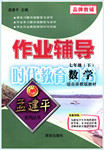Imagine you’re at a party full of
strangers.You’re nervous.Who are these people?How do you start a
conversation?Fortunately,you’ve got a thing that sends out energy at tiny chips
in everyone’s name tag(标签).The chips send back name,job,hobbies,and the time available for
meeting—whatever.Making new friends becomes simple.
This hasn’t quite happened in real life.But
the world is already experiencing a revolution using RFID technology.
An RFID tag with a tiny chip can be fixed in
a product,under your pet’s skin,even under your own skin.Passive RFID tags have
no energy source—batteries because they do not need it.The energy comes from the
reader,a scanning device(装置),that sends out
energy(for example,radio waves) that starts up the tag immediately.
Such a tag carries information specific to
that object,and the data can be updated.Already,RFID technology is used for
recongnizing each car or truck on the road and it might appear in your
passport.Doctors can put a tiny chip under the skin that will help locate and
obtain a patient’s medical records.At a nightclub in Paris or in New York the
same chip gets you into the VIP(very important person) section and pays for the
bill with the wave of an arm.
Take a step back:10 or 12 years ago,you
would have heard about the coming age of computing.One example always seemed to
surface:Your refrigerator would know when you needed to buy more milk.The
concept was that computer chips could be put everywhere and send information in
a smart network that would make ordinary life simpler.
RFID tags are a small part of this
phenomenon.“The world is going to be a loosely coupled set of individual small
devices,connected wirelessly,”predicts Dr.J.Reich.Human right supporters are
nervous about the possibilities of such technology.It goes too far tracking
school kids through RFID tags,they say.We imagine a world in which a beer
company could find out not only when you bought a beer but also when you drank
it.And how many beers.Accompanied by how many biscuits.
When Marconi invented radio,he thought it
would be used for ship-to-shore communication,not for pop music.Who knows how
RFID and related technologies will be used in the future.Here’s a wild
guess:Not for buying milk.
1.The article is intended to ______.
A.warn people of the possible risks in
adopting RFID technology
B.explain the benefits brought about by RFID
technology
C.convince people of the uses of RFID
technology
D.predict the applications of RFID
technology
2.We know from the passage that with the
help of RFID tags,people ______.
A.will have no trouble getting data about
others
B.will have more energy for conversation
C.will have more time to make friends
D.won’t feel shy at parties any longer
3.Passive RFID tags chiefly consist of ______.
A.scanning devices
B.radio waves
C.batteries
D.chips
4.Why are some people worried about RFID
technology?
A.Because children will be tracked by
strangers.
B.Because market competition will become
more fierce.
C.Because their private lives will be
greatly affected.
D.Because customers will be forced to buy
more products.
5.The last paragraph implies that RFID
technology ______.
A.will not be used for such matters as
buying milk
B.will be widely used,including for buying
milk
C.will be limited to communication uses
D.will probably be used for pop music

 作业辅导系列答案
作业辅导系列答案
 作业辅导系列答案
作业辅导系列答案